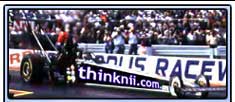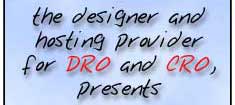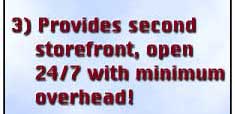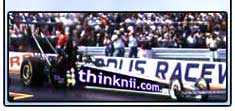|
|
|
||||||||
|
|
Now there aren't too many people beating our doors down to get in the wind tunnel. It used to be that the chassis builders had to take the rear quarter-panels and blend them in with fiberglass to the rear end - it was a real pain for them. Now they get a body in a box and all they have to do is attach it to the tubing. They don't have to finesse metal to plastic trying to make it look good. That eliminates cheating. The bodies have been pre-approved by NHRA so there are templates for all of the molds when someone has a racecar built. When you take the car to the racetrack the same templates are put on them there. The same thing is true for the Neon. Now winning or losing comes down to tuning, engine power and the driver, and everything being equal, I think our teams will pull us through every year. Q: What is GM Racing's role in promoting safety in the sport? A: Back in the early '90s we formed an alliance with our research department. Dr. John Melvin was appointed as the head engineer to work with GM Racing to work on protecting our drivers. It's grown tremendously from there, and whenever a safety issue presents itself, it's the job of GM Racing's safety team to fix it. They're always doing development and research work because it's an ongoing educational process. A lot of safety equipment goes on board all the GM-owned vehicles and every driver is required to use a six-point harness, a fresh-air system and a HANS device. For the cars that we don't own but we're associated with, we're only in an influential mode. You'll see a lot of teams using the HANS, or the six-point harness, or padding on the chassis because we've been able to show them that it's effective. Prudhomme's team jumped on board right away from Larry Dixon, to Ron Capps to Tommy Johnson. We've influenced a lot of IHRA guys as well. We strongly encourage all drivers to use all of the effective safety devices. GM has probably purchased 20 HANS devices for IHRA competitors and probably another 25 for NHRA competitors. We're constantly trying to show guys the benefits of the different safety systems. It can be a dangerous business and we want our competitors to have every chance of surviving a catastrophic accident. We spend so much time with these guys that they become our family, so we keep working on them trying to show them the benefits of the various safety systems at their disposal. Q: How do you explain the success of GM Racing's drag racing program over the last decade? A: Success comes from having the proper staff and a highly motivated group that is interchangeable. For example, Russ O'Blenes and Steve Boswell were big players for us on our off-road program. We were able to take that talent and bring them over to help us on the drag racing program - both the front-wheel drive and now the Pro Stock engines. Our entire department works that way. We have programs like Winston Cup and Busch that are strong every year, and we have other programs that are strong a certain number of years, they fall off a little bit and then they come back later. We're constantly having to manage where individual skills sets are needed, so we have folks that go from program to program putting out the hot fires of the day. We can take people who work in NHRA, like Alba Colon, and have her work in Winston Cup, and whatever they learn in any one specific program, they can utilize that information when they are needed on another program. We have the luxury of taking a lot of talent and moving it from program to program wherever it's needed. We have a lot of pride in the programs we've put in place. We have a lot of energetic, young people that work at GM Racing who are able to make the sacrifices, and who put in long hours with very little sleep. Another example, wind-tunnel tests are rarely held during a day shift. So our staff work their normal gig during the day, and then at four
o'clock we'll go to a wind-tunnel test that can last until midnight.
But that's if we're lucky because most of the time it's a midnight to
8 a.m. test. The production vehicles get priority since that's where
we make our money. When the teams are testing, they try their best to
be there. When the teams are racing, they try their best to be there
- and then they're back here designing and testing new technology for
the race teams. Basically, everyone on our team is a part of every aspect
of the racing program and it takes a certain person to be able to handle
that - the travel, the days away from your family, and then the reward
of seeing their teams being successful that motivates them to continue.
We have some great people here at GM Racing and I'm proud to be a part
of it. |
|
|||||||










